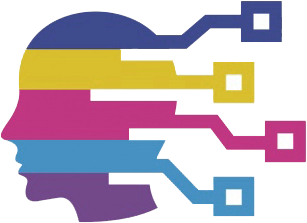In a time when technology is often perceived as a double-edged sword, it is essential to recognize it for what it truly is: a tool. Just like any instrument, its effectiveness and ethical implications depend significantly on how we choose to wield it. Artificial intelligence (AI) is no exception to this rule. The narrative surrounding AI often paints it as an autonomous entity rather than a mere extension of human capabilities. However, it is crucial to reframe our understanding and view AI as a facilitator that can, in the right context, enhance educational frameworks—if approached with caution and critical oversight.
AI’s Role in Education: A New Frontier
In a groundbreaking initiative, China is setting the stage to explore the transformative potential of AI in educational settings. With plans for widespread integration across all levels of schooling, the Chinese government aims to revolutionize its educational curriculum and methodologies. By 2035, the nation aspires to evolve into what it refers to as a “strong-education nation,” focusing on innovative approaches to strengthen the abilities of both educators and students.
The ambition behind this plan is to cultivate essential skills among students and foster an environment conducive to critical thinking and problem-solving. For instance, AI could facilitate the development of soft skills such as collaboration and communication while also addressing higher-order cognitive functions. The idea is not merely to utilize AI as a standalone solution but to harness its capabilities to create a more adaptive and personalized learning experience.
Concerns About AI Integration in Learning Environments
Despite the optimistic prospects, the mere thought of AI in classrooms can evoke skepticism and apprehension. The success of such initiatives rests on the fundamental premise that AI is employed judiciously as an educational tool. Detractors often argue that AI lacks the capacity to engage creatively or contextually. This is particularly troubling when one considers the current state of AI systems, many of which are primarily language models designed to generate text based on statistical likelihood rather than a profound understanding of content.
When AI systems operate without adequate oversight or ethical frameworks, there is a risk that they might misguide students. One cannot overlook the phenomenon of “confidently wrong” outputs, where the AI presents dubious information with undue certainty—a scenario that can lead to misconceptions and confusion among learners. Therefore, as we contemplate AI’s deployment in educational systems, it becomes increasingly clear that developing bespoke, transparent systems is vital.
The Need for Purposeful AI Implementation
What does responsible AI in education look like? Firstly, it necessitates that the AI be purpose-built, specifically trained by educational professionals and continuously tested and refined. Among the goals should be ensuring that the AI remains transparent—allowing educators to scrutinize its processes and outputs critically. An AI that evolves in tandem with educational practices could indeed be a remarkable ally in helping tailor student experiences to individual needs.
AI development in the educational sector must be approached with a sense of urgency, yet tempered with care. It is vital for both China and the United States, or any nation considering similar integrations, to establish strong ethical guidelines that govern the creation and application of these systems. Without this crucial oversight, the risk of misuse escalates and may result in adverse consequences rather than the promised transformative benefits.
A Vision for the Future of Learning
As we embark on this uncharted territory, it is imperative that educators, policymakers, and technologists collaborate closely to ensure that AI enhances the learning experience rather than detracting from it. This collaborative approach can help mitigate fears and foster a culture of innovation, adaptability, and accountability in education. If we are to realize the true potential of AI, we must embrace it thoughtfully, safeguarding the delicate balance between progress and ethical responsibility in our educational institutions.

